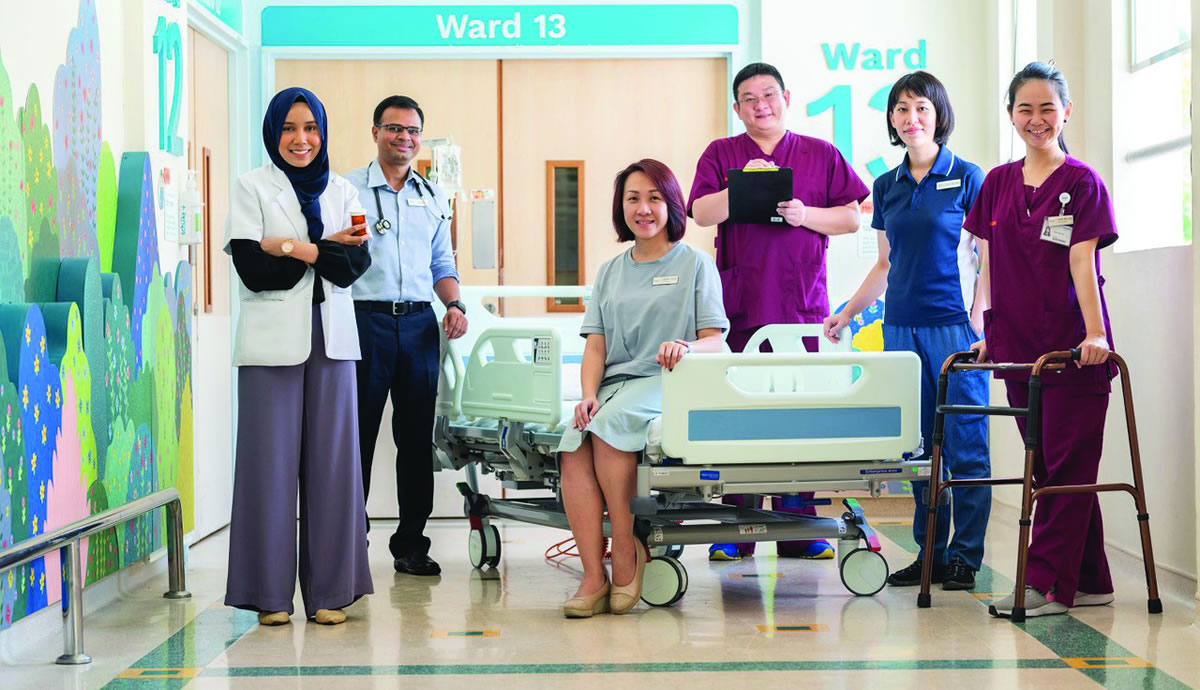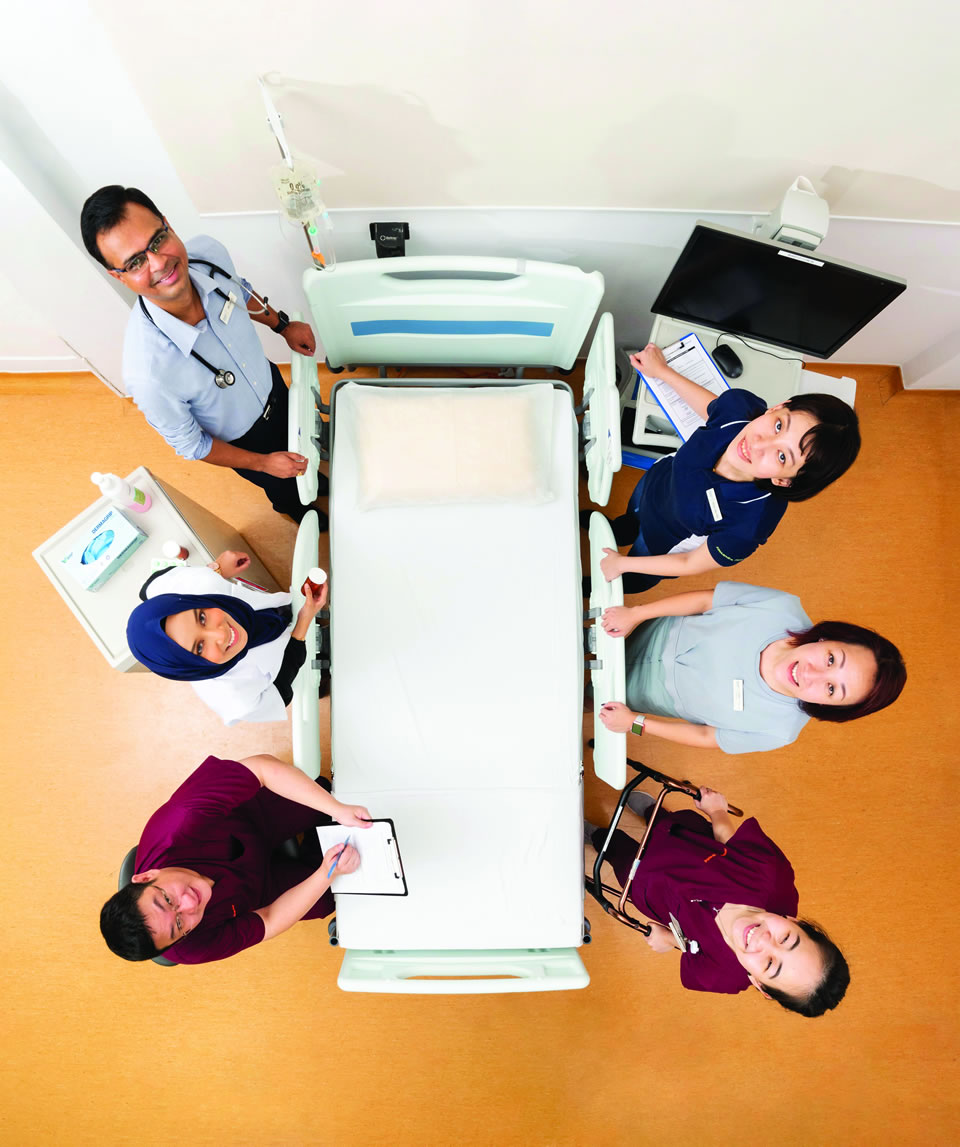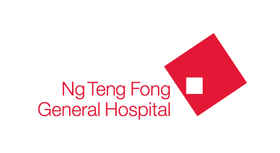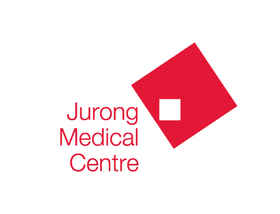Hospitals are run either as acute or community hospitals, where patients receive their diagnosis and treatment for their acute care needs through an acute hospital and are sometimes subsequently, transferred to community hospitals for rehabilitative services such as physiotherapy.
Alexandra Hospital (AH) is the first healthcare institution in Singapore to roll out a new model of care, called the Integrated General Hospital (IGH), where patients receive end-to-end services under one roof from a single care team and where their post discharge care is well integrated with the community.
The multi-disciplinary team which cares for the patient comprises doctors, nurses, pharmacists, therapists, dietitians, medical social workers, care managers, and administrators, all of whom lend their expertise for the patient’s physical, mental, and social needs.
Twice a week, this team convenes in the morning to discuss the care plan recommended by the lead member regarding the inpatient’s current condition. Together, the team calibrates the patient’s care plan based on the patient’s needs, which may change over time as the patient’s condition improves or deteriorates. For example, the patient may receive higher intensity of medical care during the initial phase of admission with an acute illness, and as the patient’s condition stabilises, the intensity of the medical care will be scaled down, while the rehabilitative care, which is more critical for recovery at the sub-acute phase of illness, will be ramped up so that the intensity and type of care are seamlessly matched to the trajectory of the patient’s illness.
I have been admitted a few times to different hospitals for falls, but this is the first time I am completing a few rehabilitation sessions at a special room within the same ward. It’s convenient and I looked forward to going home to live my normal life again.
Upon discharge, patients are referred to a named primary care physician, either a GP or a polyclinic doctor, who will continue to manage the patient. For specialist outpatient appointments, care is coordinated by the patient’s principal doctor at AH. This one principal doctor will attend to all of the patient’s healthcare needs and consolidate care plans for those with multiple chronic conditions into one appointment, according to the patient’s goals. It is hoped that this focus on holistic care will enhance patients’ outcomes and their family’s healthcare experience.
“Such integrated care model is patient-centric where resourcing is also centralised, dynamic and sited where the patient is. The patient does not move from one institution to another, which saves time, administrative hassle and costs. More importantly, this ensures continuity of care and seamless communication within the same care team and overall, better clinical outcomes for the patient”, said Dr Satya Gollamudi, Head of the FAST programme and Senior Consultant at AH.

The design of the IGH model was guided by insights from the community at Queenstown. The Health Innovation Project by the Department of Communications and New Media at the National University of Singapore (NUS) reached out to more than 700 respondents around Queenstown, and identified issues faced by the community. Subsequently, AH partnered the Chua Thian Poh Community Leadership Centre at NUS to carry out a Receptivity Study of about 170 residents in Queenstown where residents shared their hopes and expectations of AH’s care models.
80 year-old Mr Lo (not his real name) experienced AH’s IGH care model when he was warded early last year for a fall. Prior to this admission, he had previously been warded for spinning spells and falls. Since his transfer from NUH A&E to AH, he had been managed by a care team led by Dr Liew Mei Fong. Dr Liew also manages his multiple related conditions from hypoglycemia, diabetes, hypertension to chronic kidney disease.
Such integrated care model is patient-centric where resourcing is also centralised, dynamic and sited where the patient is. The patient does not move from one institution to another, which saves time, administrative hassle and costs. More importantly, this ensures continuity of care and seamless communication within the same care team and overall, better clinical outcomes for the patient.
After a few days of medication and treatment, Mr Lo progressed to the next tier of rehabilitative care with physiotherapist, Muhammad Norrisman Bin Mohamed Hassan and occupational therapists, Quek Shufen and Cheryl Goh Jie Ying from the same care team, who over five sessions, helped Mr Lo to ambulate with walking stick assistance.
After several one-hour daily sessions to walk with a walking frame and carrying out several other assisted-living activities such as hanging clothes, sweeping the floor and pouring water, Mr Lo was discharged after two weeks.
“I have been admitted a few times to different hospitals for falls, but this is the first time I am completing a few rehabilitation sessions at a special room within the same ward. It’s convenient and I looked forward to going home to live my normal life again,” beamed Mr Lo.
Chief Executive Officer of AH, Associate Professor Jason Phua said, “Whatever we do at AH, we must always keep in mind that it is for our patients, their families, and the community – people that we should and will work with to co- design the hospital and campus.”
Efforts are ongoing to improve and validate processes for the IGH, with a view to scale more successful practices. Over time, it is hoped that more patients who require acute hospital care but not complex tertiary specialist treatment, can be managed through the IGH.












